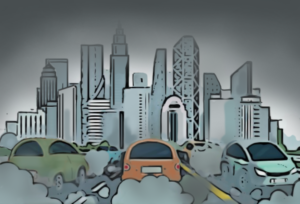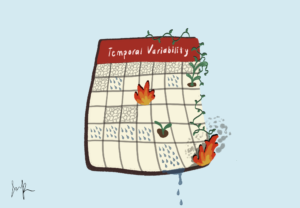
Earlier this month, the Biden administration approved the ConocoPhillips’ Willow Project in the western Arctic of Alaska. As a result, the United States has officially committed to new oil and gas drilling, as well as massive greenhouse gas emissions for decades to come.
ConocoPhillips’ Willow Project is focused on an expansive oil drilling venue located on Alaska’s North Slope, less than 30 miles from the Arctic Ocean. There are various laws and regulations for oil and gas extraction, but these may not withstand the influence of the Willow Project. This area is a promised land for new oil reserves in the United States, but it is also home to the dwindling polar bear population and thousands of migrating, endangered animals (The Washington Post). As a result, many non-government organizations (NGOs) such as Greenpeace USA and Earthjustice have brainstormed solutions to halt the Biden administration’s approval. Top climate activists are additionally protesting to reject the project in hopes for a future without a heavy reliance on fossil fuels (CNN). The Federal Director for CCAN Action Fund, Quentin Scott, states, “On behalf of CCAN Action Fund, we are very disappointed by President Biden’s decision today. We ask the President to rethink his decision and reverse course” (Chesapeake Climate).
There are glimmers of hope in planting the end to this fossil fuel multiplier. The Biden administration admits that the passing of this project was not entirely in their control, as ConocoPhillips has existing leases in the area, leading to possible fines for the administration if they had decided to reject the proposal. However, the Biden administration had declared to end new oil drilling on public land, making the project highly susceptible to public intervention to keep his word. Taking place on federal lands, the project requires federal permits and support to continue their task, putting the fate of the project in the influence of the public (The Washington Post). So far, environmentalist groups have filed two lawsuits in an attempt to block the oil and gas project. Along with Indigenous groups, many argue that the project would breach the country’s environmental commitments, as well as corrupt the future effects of fossil fuels on our planet (Euronews.green). “President Biden still has the right to reverse his decision and we strongly urge him to do so,” Scott says.
With the usage of fossil fuels continuously on the rise, a project as big as Willow would drastically deteriorate our planet, as well as eliminate any current progress the United States has made in limiting fossil fuel usage. There is immense pressure on President Biden to make the right decision for our planet, as many anticipate environmental destruction to skyrocket after the Willow Project is underway.
The views and opinions expressed are those of the authors and do not necessarily reflect nor represent the Earth Chronicles and its editorial board.
Works Cited
Chesapeake Climate Action Network, chesapeakeclimate.org/blog/. Accessed 20 Mar. 2023.
EuroNews. “‘Carbon bomb’: What is the Willow project and why is Joe Biden being sued for it?” EuroNews.green, Mar. 2023, www.euronews.com/green/2023/03/14/biden-administration-approves-alaskas-willow-oil-project-sparking-anger-from-environmental. Accessed 20 Mar. 2023.
Nilsen, Ella. “The Willow Project has been approved. Here’s what to know about the controversial oil-drilling venture.” CNN Politics, Mar. 2023, www.cnn.com/2023/03/14/politics/willow-project-oil-alaska-explained-climate/index.html.
Puko, Timothy. “What is Willow? How an Alaska oil project could impact the environment.” The Washington Post, 17 Mar. 2023, www.washingtonpost.com/climate-environment/2023/03/17/willow-project-alaska-oil-drilling-explained/. Accessed 20 Mar. 2023.









